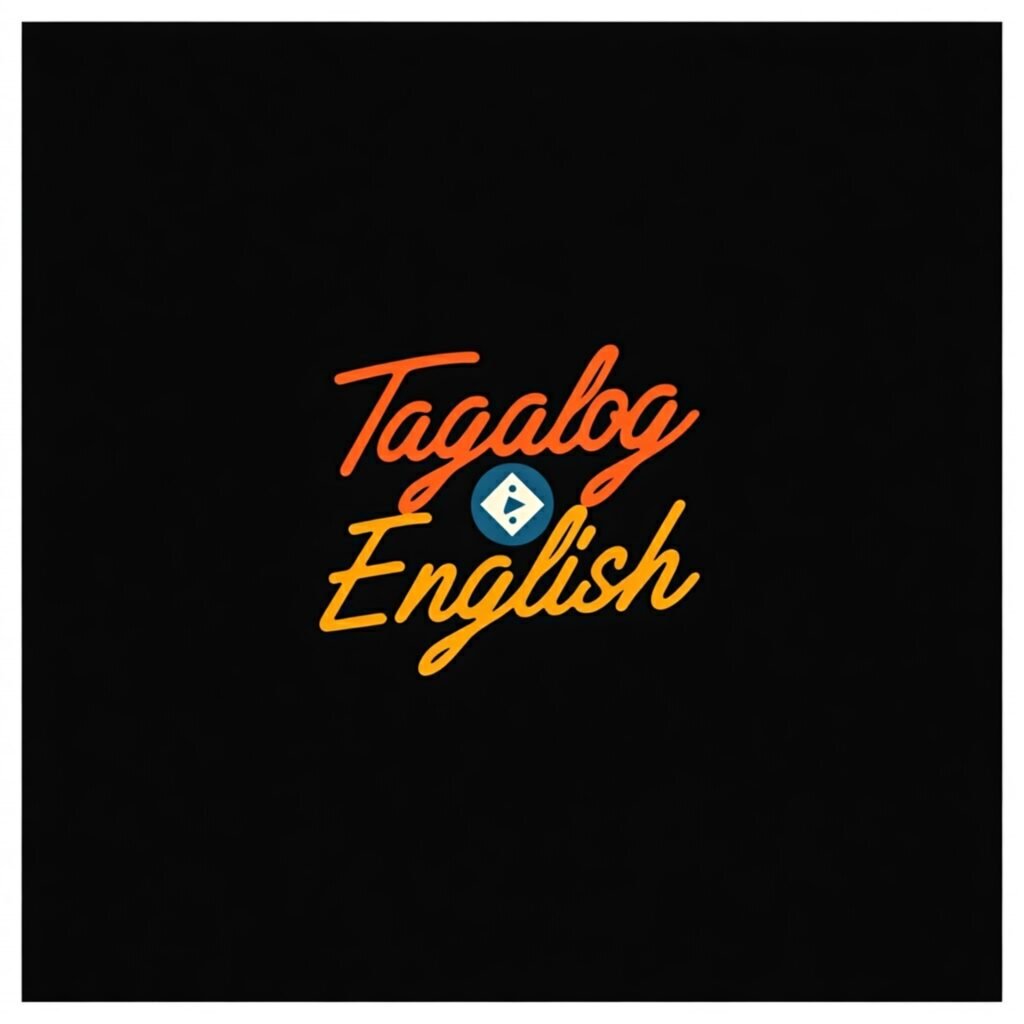Hey there, mga kaibigan! It’s Iza here, and today we’re diving into something super close to my heart – our beloved Taglish. You know, that quirky, colorful mix of Tagalog and English that’s become the unofficial language of the streets, social media, and basically everywhere in between here in the Philippines. So, grab your favorite merienda, find a comfy spot, and let’s unravel the fascinating world of Taglish together!
The Birth of Taglish: A Love Child of Cultures
Imagine this: you’re walking down the bustling streets of Makati, and you overhear someone say, “Uy, nagpa-follow up ka na ba sa HR about your leave? Kasi ako, na-approve na yung akin kahapon!” If you’re scratching your head thinking, “Wait, was that English or Tagalog?” – congrats! You’ve just encountered Taglish in its natural habitat.
The Historical Cocktail
Taglish didn’t just pop up overnight like a surprise jackfruit tree in your backyard. Nope, it’s been brewing for centuries, thanks to our country’s colorful history. Picture this:
- Spanish colonial era: 300+ years of “Sige, mamaya na lang” and “Kumusta?”
- American period: Hello, English! Meet our tongues that are used to rolling R’s.
- Post-independence era: A nation trying to figure out its linguistic identity while juggling global connections.
- Modern times: Social media, K-dramas, and global Filipino diaspora adding more flavors to our linguistic adobo.
The result? A beautiful, chaotic, and utterly Filipino way of expressing ourselves that’s as diverse as our 7,641 islands.
Why Taglish? Because… Why Not?
Now, you might be wondering, “Iza, bakit ba we need to mix languages? Isn’t it confusing?” Well, my dear reader, let me break it down for you:
Efficiency is Key
We Filipinos are nothing if not practical. Why use a long Tagalog word when an English one will do? Or vice versa? It’s like having the best of both worlds right at the tip of your tongue. Need proof? Check this out:
| Taglish | Pure Tagalog | Pure English |
|---|---|---|
| Na-late ako sa work | Nahuli ako sa pagdating sa aking pinagtatrabahuhan | I was late for work |
| I-send mo sa akin yung file | Ipadala mo sa akin ang talaksan | Send me the file |
See? Taglish just flows, doesn’t it? It’s like linguistic shorthand that gets the job done faster than you can say “Ano ba yan?”
Emotional Expression Supreme
Here’s the thing – Taglish isn’t just about convenience. It’s our secret weapon for expressing emotions with pinpoint accuracy. Some feelings just hit different in Tagalog, while others need that English oomph. Let me show you:
- “I’m so kilig!” (There’s no English word that captures that fluttery, giggly feeling quite like ‘kilig’, right?)
- “Naku, so baduy naman ‘yan!” (Because sometimes, ‘tacky’ just doesn’t cut it.)
- “Ang sarap mag-chill sa beach!” (Because ‘relax’ doesn’t quite capture that blissful, sand-between-your-toes feeling.)
It’s like we’ve created our own emotional color palette, mixing and matching to paint the perfect picture of how we feel.
The Anatomy of Taglish: Breaking Down the Blend
Okay, let’s get a bit nerdy for a sec (promise it’ll be fun!). Taglish isn’t just random mixing – there’s a method to our madness. Let’s dissect this linguistic phenomenon, shall we?
Code-Switching: The Art of Language Hopscotch
Picture this: you’re in the middle of a Tagalog sentence, and suddenly – bam! – an English word or phrase jumps in like an unexpected guest at a family reunion. That’s code-switching, and it’s the backbone of Taglish. Here’s how it usually goes down:
- Intra-sentential switching: Mixing languages within a single sentence.
Example: “Pupunta ako sa mall para mag-shopping.”
(I’m going to the mall to go shopping.) - Inter-sentential switching: Alternating languages between sentences.
Example: “Kumain ka na ba? I’m starving!”
(Have you eaten? I’m starving!) - Tag-switching: Adding a short phrase from one language into another.
Example: “It’s getting late na. We should go home.”
(It’s getting late already. We should go home.)
Grammar Gymnastics
Now, here’s where it gets really interesting. Taglish doesn’t just borrow words; it creates its own grammatical rules. It’s like linguistic parkour, jumping over traditional grammar obstacles with style. Check out these Taglish grammar hacks:
| Taglish Construction | Explanation | Example |
|---|---|---|
| Verb + -in | Adding -in to English verbs to make them Tagalog-style | “I-check-in mo na yung bags.” (Check in the bags.) |
| Mag- + English verb | Using mag- prefix with English verbs | “Mag-search ka sa Google.” (Search on Google.) |
| Na- + English adjective | Adding na- to show a state or condition | “Na-stress ako sa traffic.” (I got stressed because of the traffic.) |
It’s like we’ve created our own linguistic Lego set, snapping together pieces from different languages to build something uniquely Filipino.
The Taglish Spectrum: From Subtle to Full-On
Here’s a fun fact: not all Taglish is created equal. There’s a whole spectrum of Taglish usage, ranging from “just a sprinkle” to “full-on language smoothie.” Let’s break it down:
Light Taglish
This is when you’re mostly speaking one language but pepper in a few words from the other. It’s like adding a dash of patis to your adobo – just enough to enhance the flavor.
Example: “Nagpunta kami sa beach last weekend. Ang ganda ng sunset!”
(We went to the beach last weekend. The sunset was beautiful!)
Medium Taglish
Now we’re talking about a more balanced mix. It’s like your favorite halo-halo – a little bit of everything in every spoonful.
Example: “So, nag-decide kami na mag-road trip to Baguio kasi we needed a break from work.”
(So, we decided to go on a road trip to Baguio because we needed a break from work.)
Heavy Taglish
This is when the languages are so intertwined, it’s hard to tell where one ends and the other begins. It’s linguistic sinigang – a delicious mix of flavors that just works.
Example: “OMG, girl! Na-approve na yung leave ko, so pwede na tayong mag-plan ng trip natin. I’m so excited! Saan ba tayo pupunta? Beach or mountains? Basta somewhere na relaxing, ha?”
(OMG, girl! My leave was approved, so we can now plan our trip. I’m so excited! Where should we go? Beach or mountains? Just somewhere relaxing, okay?)
The Taglish Generation: How It’s Shaping Filipino Identity
Now, let’s zoom out a bit and look at the bigger picture. Taglish isn’t just a way of speaking; it’s become a crucial part of modern Filipino identity, especially for us millennials and Gen Z folks. It’s like our linguistic fingerprint – unique, personal, and telling a story about who we are.
Digital Natives, Taglish Speakers
Social media has been like a turbo boost for Taglish. With character limits on Twitter and the rapid-fire nature of online convos, Taglish has become our go-to for expressing ourselves quickly and effectively. It’s not uncommon to see posts like:
“Grabe ang traffic kanina! Took me 2 hours to get home. 😭 #ManilaProbz”
(The traffic was terrible earlier! Took me 2 hours to get home. 😭 #ManilaProbz)
This digital playground has allowed Taglish to evolve at warp speed, with new terms and expressions popping up faster than you can double-tap an Instagram post.
Cultural Identity in a Globalized World
Here’s something to chew on: in a world that’s becoming increasingly globalized, Taglish serves as a unique marker of Filipino identity. It’s our way of saying, “Hey, we’re global citizens, but we’re proudly Filipino too!”
Think about it:
- We can navigate international business meetings in English.
- We can enjoy our lola’s stories in Tagalog.
- And then we blend it all together when chatting with our barkada.
It’s like we’re linguistic chameleons, adapting to our environment while still keeping our distinct colors.
The Taglish Controversy: To Mix or Not to Mix?
Alright, let’s address the elephant in the room – not everyone’s a fan of our beloved Taglish. It’s like the pineapple-on-pizza debate of the linguistic world. Let’s break down the arguments:
Team Pro-Taglish
- It’s authentically Filipino: Taglish represents our unique history and cultural blend.
- Efficiency: It allows for precise and quick communication.
- Cultural bridge: It helps Filipinos connect with both local and global communities.
Team Pure Language
- Language preservation: There’s a fear that Taglish might lead to the erosion of ‘pure’ Tagalog.
- Academic concerns: Some worry about its impact on formal language skills.
- Cultural dilution: There’s an argument that it represents a form of cultural Americanization.
My take? Language is alive, and it evolves. Taglish isn’t replacing our native languages; it’s adding another dimension to them. It’s like adding new instruments to our cultural orchestra – the melody is still distinctly Filipino, but now we have more ways to play it.
Taglish in Pop Culture: From Teleseryes to Tiktok
Let’s take a fun detour into how Taglish has invaded (in the best way possible) every corner of Filipino pop culture. It’s like the friendly neighborhood spider – it’s everywhere, and honestly, we kind of love it.
Teleseryes: The Taglish Playground
Turn on any Filipino TV show, and you’ll hear Taglish in all its glory. It’s not just dialogue; it’s an art form. You’ll hear lines like:
“I-save mo naman ako from this nightmare!”
(Save me from this nightmare!)
Or the classic:
“Bakit mo ako iniwan? Am I not enough?”
(Why did you leave me? Am I not enough?)
These lines have become so iconic that they’re practically part of our cultural DNA now.
OPM: Taglish Lyrics That Hit Different
Our music scene is a Taglish paradise. From pop to hip-hop, artists are blending languages to create lyrics that are uniquely Filipino. Take Moira Dela Torre’s “Paubaya”:
“Wala nang babawi pa
This is goodbye
Sana’y mapatawad mo rin ako balang araw”
(There’s no taking back anymore
This is goodbye
I hope you’ll forgive me someday)
It’s like they’ve found the secret recipe for tugging at our heartstrings – a dash of English for universality, a heap of Tagalog for that emotional punch.
Social Media: The Taglish Amplifier
If Taglish was a currency, social media would be its stock exchange. Platforms like Twitter, TikTok, and Facebook are bursting with Taglish content that ranges from hilarious to heartwarming:
- Twitter: “Ang init! I’m literally melting here sa office. Penge aircon, Lord!”
(It’s so hot! I’m literally melting here in the office. Please give us air conditioning, Lord!) - TikTok: “Guys! I discovered the best skincare routine ever. Super affordable pa! Here’s my secret…”
(Guys! I discovered the best skincare routine ever. It’s super affordable too! Here’s my secret…)
It’s like we’ve created our own online Taglish universe, complete with memes, hashtags, and viral challenges.
Taglish in the Professional World: Balancing Act
Now, let’s talk business. Taglish in the professional world is like walking a tightrope – it’s all about balance and knowing your audience. Here’s how it typically plays out:
The Office Scenario
Picture this: You’re in a meeting with your Filipino colleagues. The PowerPoint slides are in English, but the discussion? Pure Taglish magic:
“Based sa data natin, we need to increase our market share by 15% this quarter. Any suggestions kung paano natin ito ma-achieve?”
(Based on our data, we need to increase our market share by 15% this quarter. Any suggestions on how we can achieve this?)
It’s like we’ve created our own corporate dialect that’s efficient, relatable, and gets the job done.
Email Etiquette: The Taglish Tango
Emails are where things get interesting. It’s like a linguistic dance:
- Formal emails to higher-ups or clients: Mostly English, maybe with a sprinkle of Filipino pleasantries.
- Team emails: A more relaxed mix, often starting formal and getting more Taglish as you scroll down.
- Casual work chat: Full-on Taglish fiesta!
Example of a team email:
Subject: Project Update - Urgent Action Required
Dear Team,
I hope this email finds you well. Regarding our ongoing project:
1. Timeline update: We're behind schedule. Kailangan nating mag-doubleTime this week.
2. Budget concerns: Medyo tight tayo sa funds. Any ideas for cost-cutting?
3. Client feedback: They loved our initial proposal! Pero may konting revisions daw.
Let's discuss further in our meeting later. Salamat!
Best regards,
[Your Name]It’s like we’re code-switching not just between languages, but between levels of formality too.
Learning Taglish: Tips for the Newbie
Okay, so you’re new to the Philippines or just want to up your Taglish game. Don’t worry, I got you! Here’s your crash course in speaking Taglish like a true Pinoy:
- Start with common Taglish phrases:
- “Okay lang” (It’s okay)
- “Wait lang” (Just a moment)
- “Ano ba yan!” (What the heck!)
- Learn Tagalog sentence structures:
Understanding basic Tagalog grammar will help you mix in English words more naturally. - Listen and mimic:
Tune into Filipino YouTube channels, podcasts, or TV shows. It’s like linguistic osmosis! - Don’t be afraid to mix:
Start with simple substitutions. For example, instead of “Kumain ka na ba?” try “Have you eaten na?” - Embrace the untranslatables:
Some Tagalog words just hit different. Use them! Words like “kilig,” “gigil,” or “lambing” add that special Filipino flavor. - Practice with locals:
Nothing beats real-life conversation. Chat with your Filipino friends or colleagues – they’ll love helping you out!
Remember, Taglish isn’t about perfect grammar; it’s about communication and connection. So don’t be shy – jump in and give it a try!
The Future of Taglish: What’s Next?
As we wrap up our Taglish journey, let’s put on our future goggles and take a peek at what might be coming next for our beloved linguistic blend.
Global Taglish?
With more Filipinos spread across the globe than ever before, could we see Taglish influence other languages? Imagine walking down the streets of New York or London and hearing:
“Hey, pare! Where’s the nearest subway station?”
It’s not just a fun thought – it’s already happening in places with large Filipino communities. Taglish is becoming our linguistic export, spreading Filipino culture one mixed phrase at a time.
Tech-Driven Evolution
As AI and language technology advance, we might see some interesting developments:
- Taglish-optimized keyboards: Predictive text that switches seamlessly between Tagalog and English.
- Taglish voice assistants: Imagine Siri or Alexa understanding and responding in perfect Taglish!
- Enhanced translation tools: Software that can accurately translate Taglish to other languages, preserving its unique flavor.
Academic Recognition
There’s growing interest in Taglish from linguists worldwide. Don’t be surprised if you see Taglish studies popping up in universities, analyzing its structure, evolution, and cultural significance. We might even see Taglish dictionaries and grammar books in the future!
A New Literary Genre?
Filipino authors are already incorporating Taglish into their works, creating a new form of literature that captures the true voice of modern Filipinos. Could we see a Taglish novel winning international awards someday? I wouldn’t bet against it!
Embracing Our Taglish Identity
As we come to the end of our Taglish adventure, I can’t help but feel a surge of pride. Taglish isn’t just a way of speaking – it’s a reflection of who we are as a people. It’s the linguistic embodiment of our ability to adapt, to blend cultures, and to find our own unique voice in a globalized world.
Taglish is more than just a mix of Tagalog and English. It’s:
- A bridge between generations
- A tool for expressing our complex identities
- A source of creativity and humor
- A testament to our history and our future
So, the next time someone raises an eyebrow at your Taglish, stand proud! You’re not just speaking a language; you’re carrying forward a living, breathing piece of Filipino culture.
To wrap this up, let me leave you with a thought in true Taglish style:
“Sa mundo ng languages, tayo ang ultimate mixmaster. We’ve taken two tongues and created something uniquely natin. So, let’s celebrate our Taglish – it’s not just how we talk, it’s who we are. Mabuhay ang Taglish, and cheers to us, mga kapatid!”
(In the world of languages, we are the ultimate mixmasters. We’ve taken two tongues and created something uniquely ours. So, let’s celebrate our Taglish – it’s not just how we talk, it’s who we are. Long live Taglish, and cheers to us, brothers and sisters!)
Disclaimer: This blog post is based on personal observations, cultural experiences, and general linguistic trends. While every effort has been made to ensure accuracy, language use can vary widely across different regions and communities in the Philippines. We encourage readers to embrace the diversity of Filipino language expressions. If you notice any inaccuracies or have additional insights to share, please don’t hesitate to reach out. Your feedback helps us paint a more comprehensive picture of our vibrant linguistic landscape!





I am constantly searching online for articles that can help me. Thank you!